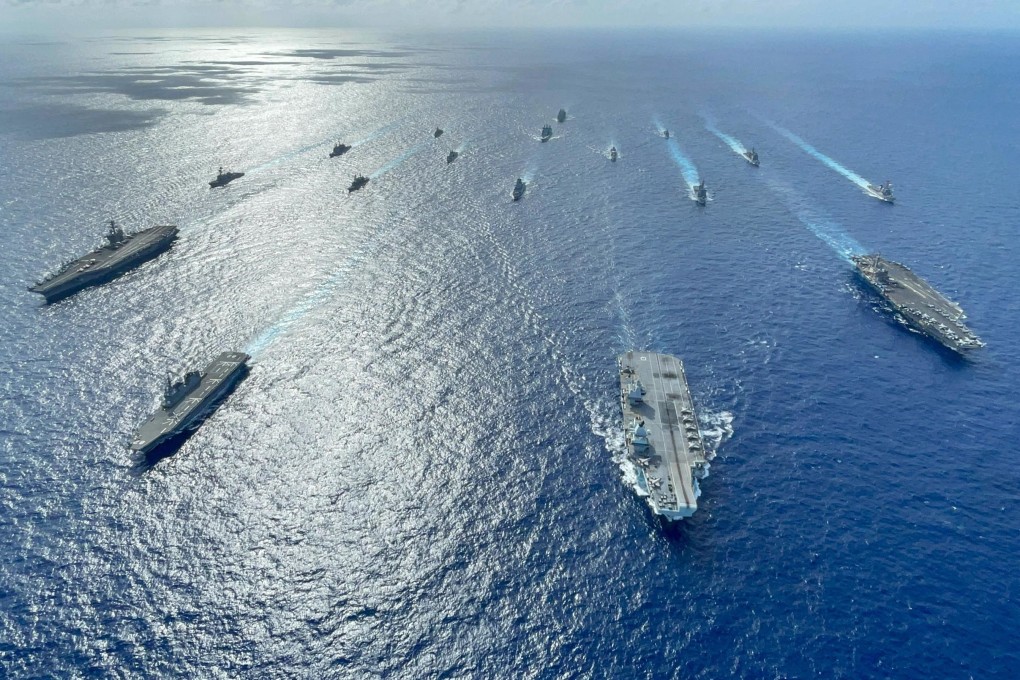Advertisement
Say it with aircraft carriers: why countries send in the big ships
- The vessels can send a political message in a time of tension, analyst says
- But active diplomacy is needed to ensure security for all, he says
Reading Time:2 minutes
Why you can trust SCMP
30

The exercise in October was typical.
Along with a Japanese helicopter carrier, Britain’s HMS Queen Elizabeth aircraft carrier joined two American carriers, the USS Ronald Reagan and USS Carl Vinson, to patrol the waters around Taiwan.
The patrol by multiple aircraft carriers came amid a spike in tensions between China and the United States and served to show the participants’ resolve to maintain a “free and open” Indo-Pacific.
Advertisement
In addition to patrols and exercises by the vessels, more countries are joining the aircraft carrier club.
Japan is modifying the Izumo-class destroyer to operate the F-35B fighter and South Korea relaunched its aircraft carrier plan.
Advertisement
China is also preparing to launch its third aircraft carrier, its first with an advanced electromagnetic catapult.
Advertisement
Select Voice
Choose your listening speed
Get through articles 2x faster
1.25x
250 WPM
Slow
Average
Fast
1.25x